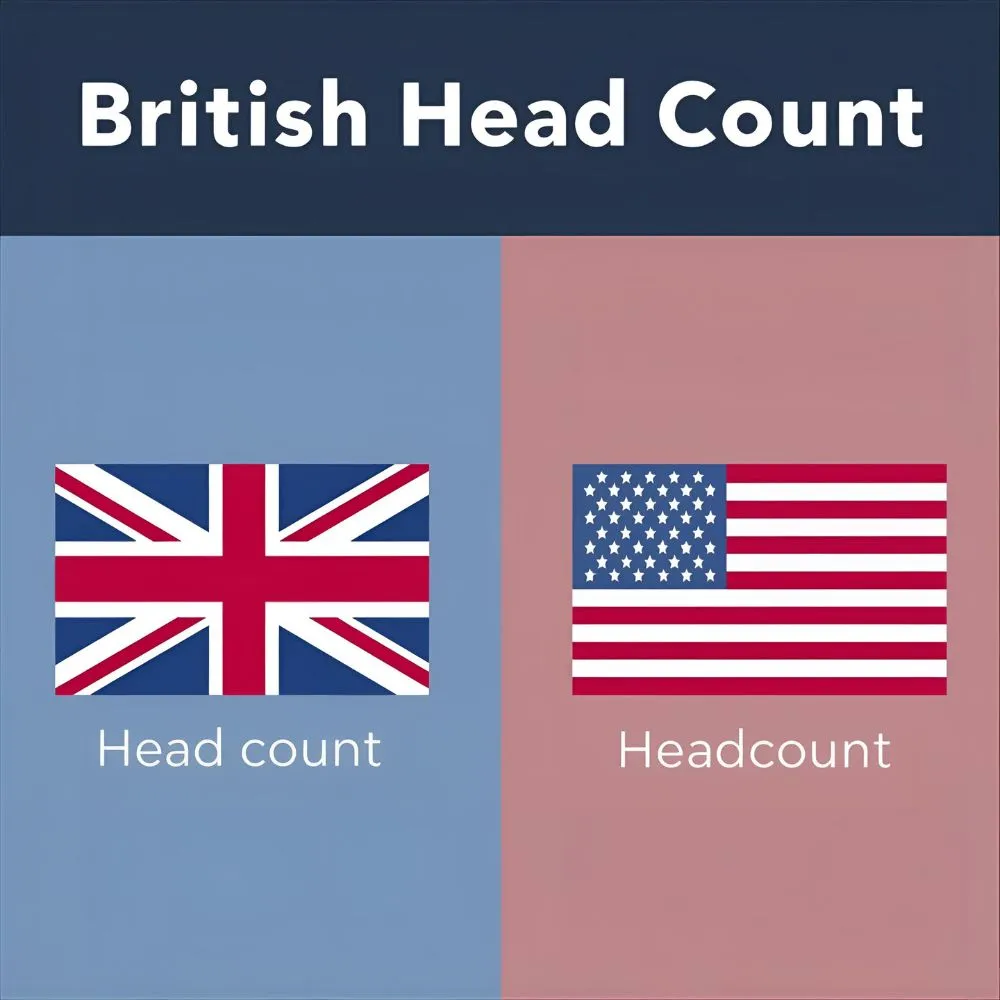When I first saw “Headcount” and “Head Count,” I was confused too — both seemed correct, right?
If you’ve ever filled out a report, written a business email, or edited an HR document, you’ve probably felt the same doubt.
People often search this keyword because they want their writing to look professional and grammatically correct. The tricky part is that both versions are used online — so which one is actually correct?
In this article, I’ll clear up this confusion in a simple way, with examples, comparisons, and real-world usage tips — so you’ll never second-guess this word again!
Headcount or Head Count – Quick Answer

The short answer: “headcount” (one word) is now the most common and accepted form, especially in business English.
- Correct: “The HR team checked the headcount before the meeting.”
- Also acceptable: “The head count was lower than expected.” (used more in older texts or less formal contexts).
The Origin of Headcount

The word comes from the literal act of counting heads—a way to measure the number of people in a group. Over time, the two-word phrase “head count” evolved into the single compound “headcount.”
This shift happened because frequent use in HR, business, and organizational settings made it more efficient to write it as one word. The same process has happened with words like “notebook” (once written as “note book”).
British English vs American English Spelling

Both British and American English accept “headcount” and “head count.” However, there are some trends:
- American English prefers “headcount” (especially in corporate and HR contexts).
- British English uses both, but “headcount” is becoming standard in business writing.
Comparison Table
| Usage | British English | American English | Example Sentence |
| Headcount | Common | Most common | “The company’s headcount rose last year.” |
| Head count | Less common | Rare | “The teacher did a head count in class.” |
Which Spelling Should You Use?

- In the US → Use “headcount” for formal and business writing.
- In the UK/Commonwealth → Both are correct, but “headcount” is safer for professional documents.
- For global audiences → Stick with “headcount” (clear, modern, and widely understood).
Common Mistakes with Headcount

- Mixing forms in one document → Always stay consistent.
- Wrong: “Our headcount is 50, but the head count dropped last year.”
- Correct: “Our headcount is 50, but it dropped last year.”
- Wrong: “Our headcount is 50, but the head count dropped last year.”
- Adding plural incorrectly →
- Wrong: “Headcounts of employees were taken.”
- Correct: “The headcount of employees was taken.”
- Wrong: “Headcounts of employees were taken.”
- Confusing with payroll or attendance → Headcount means number of people, not salaries.
Headcount in Everyday Examples

- Emails: “Please confirm the headcount for tomorrow’s training session.”
- News: “The airline cut its headcount by 2,000 workers.”
- Social media: “Small businesses are growing their headcount fast this year.”
- Formal writing: “The headcount analysis revealed staffing gaps.”
Headcount – Google Trends & Usage Data

Google Trends shows “headcount” is far more popular than “head count,” especially in the US, UK, and Australia.
- Top regions: United States, United Kingdom, India, Canada, Australia.
- Contexts: HR reports, corporate documents, workforce analysis, and education.
Comparison Table of Usage Popularity
| Term | Popularity (Global) | Trend Direction |
| Headcount | High | Rising |
| Head count | Low | Declining |
Health Care or Healthcare: The Confusing Spelling Finally Explained!
FAQs About Headcount vs Head Count
1. Is “headcount” one word or two?
Both are correct, but “headcount” is standard in modern English.
2. Can I use “headcount” in academic writing?
Yes. It is widely accepted in formal and academic contexts.
3. Which is more professional: headcount or head count?
Headcount looks more polished and modern.
4. Why does “head count” still appear in texts?
It is the older form, still used informally or in certain regions.
5. Do HR departments prefer “headcount”?
Yes, it is the global business standard.
6. Is “headcount” plural?
No. The word refers to a total number. Use “headcounts” only when comparing multiple groups.
7. Can “headcount” be used outside business?
Yes, in schools, events, sports, and military contexts.
Conclusion
The debate over “headcount or head count” is really about language evolution. Both spellings are correct, but “headcount” (one word) has become the modern standard, especially in business, HR, and professional writing. While “head count” may still appear in casual or older texts, it is fading in use.
If you write for an American audience, always use “headcount.” For British or global audiences, “headcount” is still the safer and clearer choice. Most importantly, be consistent across your documents.
By understanding the word’s origin, spelling trends, and usage, you can write with confidence and avoid common mistakes.




